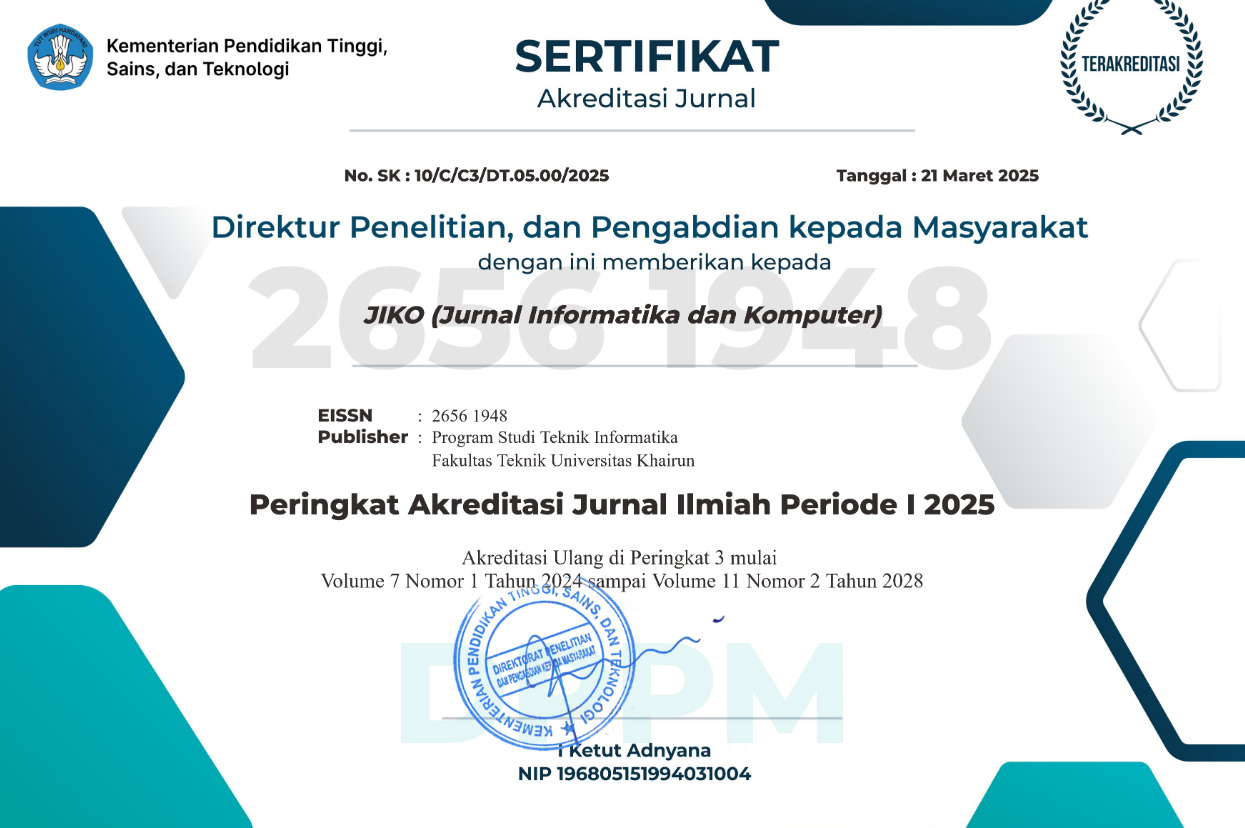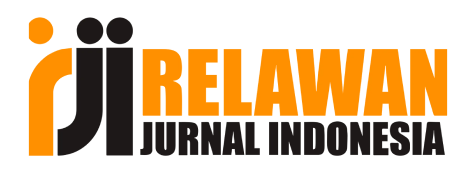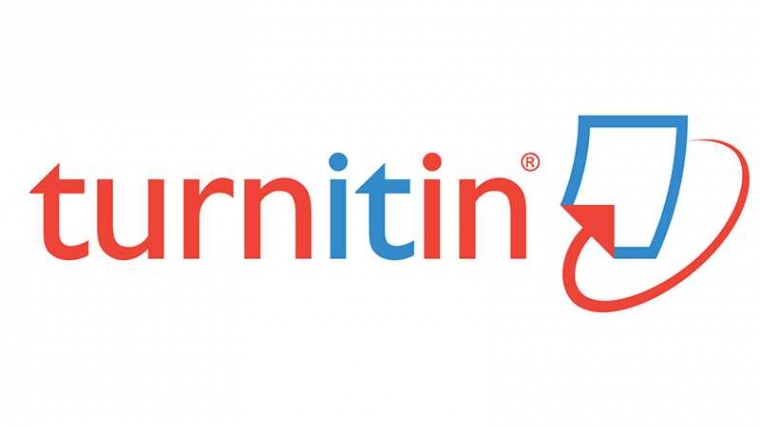AUTOMATIC ABSTRACTIVE SUMMARIZATION OF CURRICULUM VITAE USING S-BERT AND T5
Abstract
Full Text:
PDFReferences
D. F. Mujtaba and N. R. Mahapatra, “Fairness in AI-Driven Recruitment: Challenges, Metrics, Methods, and Future Directions,” May 2024.
P. Horodyski, “Recruiter’s perception of artificial intelligence (AI)-based tools in recruitment,” Computers in Human Behavior Reports, vol. 10, p. 100298, May 2023, doi: 10.1016/j.chbr.2023.100298.
G. Navarro, “Fair and Ethical Resume Screening: Enhancing ATS with JustScreen the ResumeScreeningApp,” Journal of Information Technology, Cybersecurity, and Artificial Intelligence, vol. 2, no. 1, pp. 1–7, Jan. 2025, doi: 10.70715/jitcai.2024.v2.i1.001.
P. R. Chavan, Y. Chandurkar, A. Tidake, G. Lavankar, S. Gaikwad, and R. Chavan, “Enhancing recruitment efficiency: An advanced Applicant Tracking System (ATS),” Industrial Management Advances, vol. 2, no. 1, p. 6373, Jul. 2024, doi: 10.59429/ima.v2i1.6373.
A. Mukhtar and M. Masradin, “Bagaimana Teknologi Era 4.0 Menerapkan Rekrutmen? (Kajian Manajemen Sumber Daya Manusia),” Paraduta : Jurnal Ekonomi dan Ilmu-Ilmu Sosial, vol. 1, no. 2, pp. 77–89, Sep. 2023, doi: 10.56630/paraduta.v1i2.479.
R. V. K. Bevara et al., “Resume2Vec: Transforming Applicant Tracking Systems with Intelligent Resume Embeddings for Precise Candidate Matching,” Electronics (Basel), vol. 14, no. 4, p. 794, Feb. 2025, doi: 10.3390/electronics14040794.
S. Bharadwaj, R. Varun, P. S. Aditya, M. Nikhil, and G. C. Babu, “Resume Screening using NLP and LSTM,” in 2022 International Conference on Inventive Computation Technologies (ICICT), IEEE, Jul. 2022, pp. 238–241. doi: 10.1109/ICICT54344.2022.9850889.
Dimas Bagus Susanto and Said Hamzali, “The Role of Technology in Improving the Effectiveness of Employee Recruitment and Selection,” Journal of Economic Education and Entrepreneurship Studies, vol. 5, no. 3, pp. 421–434, Aug. 2024, doi: 10.62794/je3s.v5i3.3800.
M. Lavanchy, P. Reichert, J. Narayanan, and K. Savani, “Applicants’ Fairness Perceptions of Algorithm-Driven Hiring Procedures,” Journal of Business Ethics, vol. 188, no. 1, pp. 125–150, Nov. 2023, doi: 10.1007/s10551-022-05320-w.
J. Opitz and A. Frank, “SBERT studies Meaning Representations: Decomposing Sentence Embeddings into Explainable Semantic Features,” in Proceedings of the 2nd Conference of the Asia-Pacific Chapter of the Association for Computational Linguistics and the 12th International Joint Conference on Natural Language Processing (Volume 1: Long Papers), Stroudsburg, PA, USA: Association for Computational Linguistics, 2022, pp. 625–638. doi: 10.18653/v1/2022.aacl-main.48.
M. Yani, N. S. Khodijah, R. Rendi, and M. Mustamiin, “Aplikasi Peringkas Teks Bahasa Indonesia Menggunakan Model Text-to-Text Transfer Transformer (T5),” IKRA-ITH Informatika : Jurnal Komputer dan Informatika, vol. 9, no. 2, pp. 78–86, Oct. 2024, doi: 10.37817/ikraith-informatika.v9i2.4392.
A. Deshmukh and A. Raut, “Enhanced Resume Screening for Smart Hiring Using Sentence-Bidirectional Encoder Representations from Transformers (S-BERT),” International Journal of Advanced Computer Science and Applications, vol. 15, no. 8, 2024, doi: 10.14569/IJACSA.2024.0150825.
G. E. Abdul, I. A. Ali, and C. Megha, “Fine-Tuned T5 for Abstractive Summarization,” International Journal of Performability Engineering, vol. 17, no. 10, p. 900, 2021, doi: 10.23940/ijpe.21.10.p8.900906.
D. S., S. N., J. Andrew, and M. Mazzara, “Unified extractive-abstractive summarization: a hybrid approach utilizing BERT and transformer models for enhanced document summarization,” PeerJ Comput Sci, vol. 10, p. e2424, Nov. 2024, doi: 10.7717/peerj-cs.2424.
P. Vajdecka, V. Svatek, and M. Vita, “A Novel Approach to Abstractive Summarization Based on LOF, Sentence-BERT and T5 – with Fact Checking Use Case,” 2023. doi: 10.2139/ssrn.4493592.
C. Schröer, F. Kruse, and J. M. Gómez, “A Systematic Literature Review on Applying CRISP-DM Process Model,” Procedia Comput Sci, vol. 181, pp. 526–534, 2021, doi: 10.1016/j.procs.2021.01.199.
U. Kannengiesser and J. S. Gero, “Modelling the Design of Models: An Example Using CRISP-DM,” Proceedings of the Design Society, vol. 3, pp. 2705–2714, Jul. 2023, doi: 10.1017/pds.2023.271.
M. Mlaweh, “Datasets Annotated NER PDF Resumes,” Hugging Face. Accessed: Mar. 01, 2025. [Online]. Available: https://huggingface.co/datasets/Mehyaar/Annotated_NER_PDF_Resumes.
Y. Khalil, “Resumes-Images-Datasets,” Kaggle. Accessed: Mar. 01, 2025. [Online]. Available: https://www.kaggle.com/datasets/youssefkhalil/resumes-images-datasets.
A. Ibrahim, M. Alfonse, and M. Aref, “A Systematic Review on Text Summarization of Medical Research Articles,” International Journal of Intelligent Computing and Information Sciences, vol. 23, no. 2, pp. 50–61, Jun. 2023, doi: 10.21608/ijicis.2023.190004.1252.
Z. Yao, A. Chen, and H. Xie, “Chinese long text summarization using improved sequence-to-sequence lstm,” J Phys Conf Ser, vol. 1550, no. 3, p. 032162, May 2020, doi: 10.1088/1742-6596/1550/3/032162.
Y. Liu and S. Li, “AutoIE: An Automated Framework for Information Extraction from Scientific Literature,” Jan. 2024.
M. Gebauer, F. Maschhur, N. Leschke, E. Grünewald, and F. Pallas, “A ‘Human-in-the-Loop’ approach for Information Extraction from Privacy Policies under Data Scarcity,” in 2023 IEEE European Symposium on Security and Privacy Workshops (EuroS&PW), IEEE, Jul. 2023, pp. 76–83. doi: 10.1109/EuroSPW59978.2023.00014.
D. van Strien, K. Beelen, M. Ardanuy, K. Hosseini, B. McGillivray, and G. Colavizza, “Assessing the Impact of OCR Quality on Downstream NLP Tasks,” in Proceedings of the 12th International Conference on Agents and Artificial Intelligence, SCITEPRESS - Science and Technology Publications, 2020, pp. 484–496. doi: 10.5220/0009169004840496.
P. P. M. Chau, S. Bakkali, and A. Doucet, “DocSum: Domain-Adaptive Pre-training for Document Abstractive Summarization,” Dec. 2024.
DOI: https://doi.org/10.33387/jiko.v8i2.10019
Refbacks
- There are currently no refbacks.












